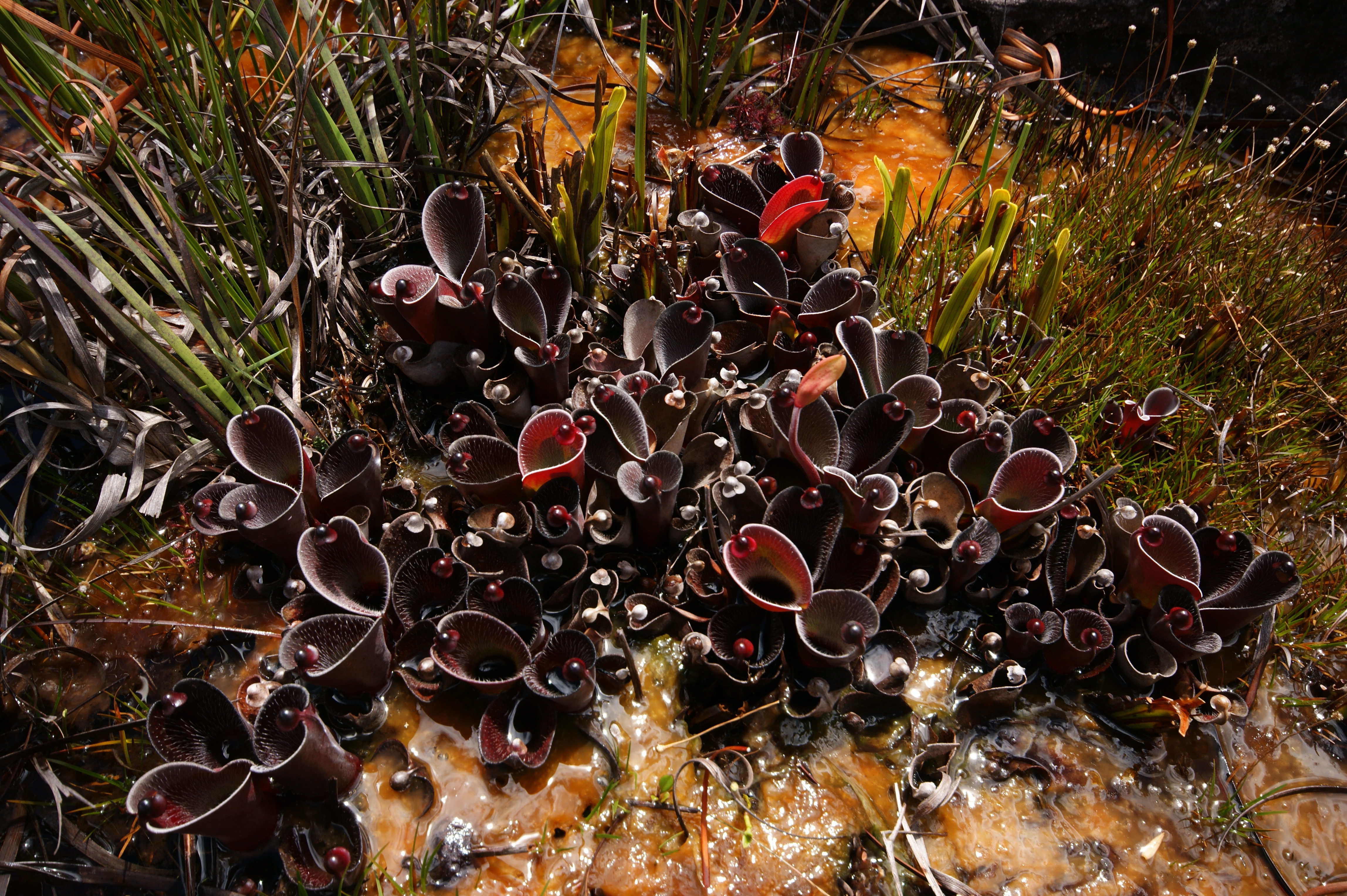Sun pitcher
(Heliamphora pulchella)

Description
Heliamphora pulchella is a species of marsh pitcher plant endemic to the Chimanta Massif and surrounding tepuis in Venezuela. It is one of the smallest species and closely related to H. minor. Two major variants of H. pulchella are known: the type variety, which bears conspicuous retentive hairs on the inner pitcher surface, and an incompletely diagnosed taxon from Amurí Tepui, which lacks these hairs. The genus Heliamphora contains 23 species of pitcher plants endemic to South America. The species are collectively known as sun pitchers, based on the mistaken notion that the heli of Heliamphora is from the Greek helios, meaning "sun". In fact, the name derives from helos, meaning marsh, so a more accurate translation of their scientific name would be marsh pitcher plants. Species in the genus Heliamphora are carnivorous plants that consist of a modified leaf form that is fused into a tubular shape. They have evolved mechanisms to attract, trap, and kill insects; and control the amount of water in the pitcher. At least one species (H. tatei) produces its own proteolytic enzymes that allows it to digest its prey without the help of symbiotic bacteria.
Taxonomic tree:







